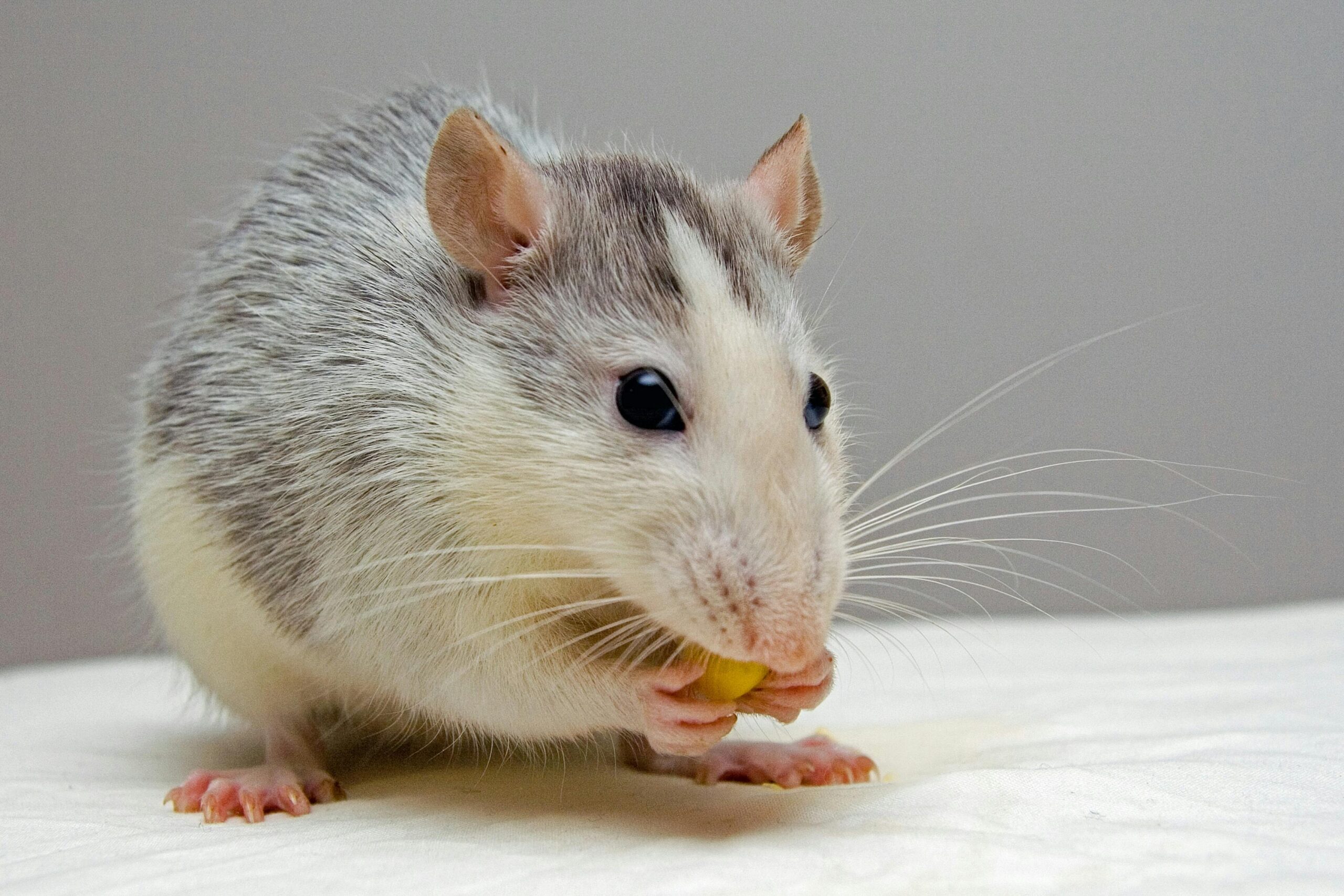If you’ve noticed chewed corners on wooden furniture, baseboards, or shed walls, you might be wondering if rats are actually eating the wood. It’s a common concern for homeowners dealing with rodent activity in or around wooden structures.
Do Rats Eat Wood? Rats do not eat wood—but they chew it constantly to wear down their ever-growing teeth. Their gnawing isn’t about nutrition; it’s about survival. Wood is just one of the many materials they’ll grind through to maintain their dental health, gain access to shelter, or build nests.
Why Do Rats Chew on Wood?
At first glance, it might seem like rats are simply trying to snack on your wooden furniture or wall studs. But the truth is more fascinating—and a bit more alarming.
Rats are compulsive gnawers. Their front teeth (incisors) never stop growing, much like human fingernails. If they don’t file them down by chewing, their teeth can grow too long, making it difficult or even impossible for them to eat. This is why wood, with its texture and resistance, becomes a prime target for their relentless chewing.
The 3 Main Reasons Rats Chew on Wood
| Reason | Explanation |
|---|---|
| To Control Tooth Growth | Rats’ incisors grow up to 4–5 inches per year. Chewing keeps them trimmed. |
| To Gain Entry | Rats chew through wood to get into homes, attics, sheds, or food storage areas. |
| To Build Nests | They break down wood into fibers to line their nests or burrows. |
Let’s take a closer look:
1. To Trim Their Teeth
Unlike humans, rats don’t have dentists. Their solution? Chew everything. Wood offers just the right amount of resistance to help grind down their teeth naturally.
2. To Break Into Your Home
Got a tiny gap in your wooden siding? A rat can make it bigger—fast. Rats can gnaw through solid wood, plywood, and even some forms of plastic and drywall. Once they create an opening, they use it to explore, nest, and scavenge for food.
3. To Create Nesting Material
Especially in attics or sheds, rats might chew wooden beams or boxes into splinters. These splinters become part of their nest, often mixed with insulation, leaves, or paper scraps.
Can Rats Chew Through Wood?
Yes—rats can easily chew through wood, and their bite strength might surprise you. These small creatures have incredibly powerful jaws relative to their size, and their teeth are tougher than you might expect.
Rat Teeth Are Built Like Tools
Rats’ incisors are:
- Harder than copper and aluminum
- Capable of biting with up to 12,000 PSI (pound-force per square inch) in pressure at the tooth surface
- Constantly sharp because they self-sharpen as they grind against each other
Materials Rats Can and Cannot Chew Through
| Material | Can Rats Chew It? | Notes |
|---|---|---|
| Soft Wood (Pine, Cedar) | Yes | Common in furniture and framing |
| Hard Wood (Oak, Maple) | Yes, but slower | More resistant, but not safe |
| Plywood & Particle Board | Yes | Frequently used in sheds and subfloors |
| Plastic (PVC, soft pipes) | Yes | Chewed through often to access water lines |
| Brick & Concrete | No | They can squeeze through gaps, but not chew solid materials |
| Steel Wool & Metal Mesh | No | Often used in pest-proofing homes and vents |
Real-World Impact
Imagine rats chewing through your attic beams, baseboards, or storage boxes—that’s not just annoying, it’s dangerous. Chewed structural wood can weaken supports, and if they gnaw wiring inside wood-framed walls, it can lead to electrical fires.
So, if you think your home’s wooden structure is protecting you from rats, think again. If they want in, wood won’t stop them.
Do Rats Eat Wood?
It’s a common misconception that when rats chew on wood, they’re actually eating it for nutrition. The truth is quite different—and fascinating.
Clarification: Rats Chew But Don’t Digest Wood
Rats use their sharp, ever-growing incisors to gnaw on wood not as food, but as a necessary behavior to keep their teeth healthy and at a manageable length. Their digestive system is not designed to break down wood fibers, so chewing is purely for maintenance and practical purposes like gaining access or creating shelter.
Why Do Rats Chew Then?
- Dental Maintenance: Continuous gnawing prevents their teeth from becoming overgrown, which can cause pain and affect their ability to eat.
- Access: Chewing helps rats create or enlarge holes in wooden structures to enter homes or reach food sources.
- Nesting: They may also chew to carve out nesting spaces or collect wood shavings for bedding.
Exceptions: The Curious Case of Woodrats (Pack Rats)
While common rats don’t eat wood, certain species known as woodrats or pack rats interact differently with wood materials. Woodrats don’t consume wood as food either, but they are known to:
- Collect wood pieces and other debris to build intricate nests.
- Incorporate wood shavings into bedding to insulate their nests.
- Gnaw on wood primarily for shelter construction rather than nourishment.
Visual Aid: Comparison Table of Rat Species and Their Interaction with Wood
| Rat Species | Do They Eat Wood? | Purpose of Wood Interaction | Notes |
|---|---|---|---|
| Common Norway Rat | No | Gnawing for dental health and access | Cannot digest wood |
| Roof Rat | No | Gnawing for access and nesting | Prefers softer wood or drywall |
| Woodrat (Pack Rat) | No | Collects wood for nest building | Uses wood pieces but doesn’t consume it |
Suggested Graph: Rat Wood-Chewing Behavior Breakdown
You could illustrate a simple pie chart showing Reasons Why Rats Chew Wood:
- 50% Dental Maintenance
- 30% Access and Entry
- 15% Nesting Material
- 5% Other Behaviors
Engaging Wrap-Up
So, while you may find wood chips and chew marks around your home, remember that rats are not dining on your wooden furniture or structures—they’re simply maintaining their teeth and making their way inside. Knowing this can help you better understand their behavior and take more effective preventative steps.
Risks of Rats Chewing Wood
While rats don’t eat wood, their persistent gnawing can cause serious problems around your home. The damage goes far beyond simple nuisance—it can lead to costly repairs, safety hazards, and health risks.
1. Structural Damage
Rats’ sharp teeth and constant gnawing can weaken wooden beams, floorboards, doors, and furniture. Over time, this compromises the structural integrity of your home, potentially leading to:
- Cracked or broken wooden supports
- Holes large enough for rats or other pests to enter
- Weakened furniture that becomes unsafe to use
This kind of damage is often hidden inside walls or under floors, making it hard to detect until it’s severe.
2. Fire Hazards
One of the most dangerous consequences of rat activity is their tendency to chew on electrical wiring, often hidden inside wooden structures. This can:
- Expose wires, causing short circuits
- Create sparks that ignite fires
- Lead to costly electrical repairs or worse, house fires
According to the National Fire Protection Association, rodents are a common cause of electrical fires in homes.
3. Health Concerns
Rats carry a range of diseases that pose risks to humans, including:
- Hantavirus
- Leptospirosis
- Salmonella
- Rat-bite fever
When rats gnaw on wood and other materials, they leave behind droppings, urine, and fur, which contaminate your living spaces and spread these illnesses. Their nests inside wooden cavities can also harbor fleas, mites, and ticks.
Visual Aid: Summary Table of Risks from Rats Chewing Wood
| Risk Category | Description | Potential Consequences | Preventative Measures |
|---|---|---|---|
| Structural Damage | Wood gnawed and weakened | Costly repairs, safety hazards | Regular inspections, sealing entry points |
| Fire Hazards | Chewing on electrical wires | House fires, electrical failures | Protect wiring, professional pest control |
| Health Concerns | Contamination from droppings and nesting | Disease spread | Cleanliness, pest control, sealing gaps |
Engaging Conclusion to This Section
The seemingly harmless act of rats chewing wood can quickly spiral into a nightmare for homeowners. From invisible structural damage to fire risks and serious health concerns, ignoring rat activity is not an option. Staying vigilant and addressing the problem early can save you from expensive repairs and protect your family’s wellbeing.
How to Prevent Rats from Chewing Wood in Your Home
Preventing rats from gnawing on your wooden structures is crucial to protect your home’s safety and integrity. Luckily, with some proactive steps, you can make your space unattractive and inaccessible to these pesky rodents.
1. Seal Entry Points
Rats can squeeze through holes as small as a quarter of an inch. Start by:
- Inspecting your home thoroughly for cracks, gaps, or holes in wooden beams, walls, doors, and windows.
- Using steel wool, metal mesh, or caulk to seal small openings—rats can’t chew through metal-based materials.
- Repairing damaged wood or replacing rotten boards that rats might exploit.
Tip: Pay special attention to areas around pipes, vents, and utility lines where rats often enter.
2. Remove Attractants
Rats invade homes primarily in search of food and shelter. To discourage them:
- Store all food, including pet food, in airtight containers.
- Clean up crumbs, spills, and garbage regularly.
- Avoid leaving dirty dishes or food waste exposed overnight.
- Keep compost bins sealed and away from your home’s foundation.
By eliminating easy food sources, you reduce the chance of rats sticking around.
3. Use Natural Deterrents
Certain scents and materials repel rats effectively:
- Peppermint oil: Soak cotton balls and place them near entry points and suspected gnaw spots. Rats dislike the strong smell.
- Cloves or cayenne pepper: Sprinkle these powders in corners or holes to create a hostile environment.
- Ultrasonic devices: These emit high-frequency sounds that can deter rodents, though effectiveness varies.
4. Professional Pest Control
If your rat problem persists or is severe, don’t hesitate to call in professionals. Pest control experts can:
- Identify entry points and nesting areas more thoroughly.
- Apply rodenticides and traps safely and effectively.
- Provide ongoing monitoring to prevent future infestations.
Visual Aid: Prevention Checklist for Homeowners
| Prevention Step | Description | Materials Needed |
|---|---|---|
| Seal Entry Points | Close all cracks and holes | Steel wool, metal mesh, caulk |
| Remove Food Sources | Store food securely, clean regularly | Airtight containers, trash bins |
| Use Natural Deterrents | Place repellents near entry points | Peppermint oil, cloves, cayenne |
| Call Professionals | Get expert help for ongoing issues | Pest control service |
Engaging Wrap-Up
Stopping rats before they start chewing can save you from expensive repairs and health risks. A little inspection, cleanliness, and some smart deterrents go a long way. Take action today—your home will thank you!
Conclusion
Rats chewing on wood might seem like a minor nuisance at first, but as we’ve explored, it’s a behavior rooted in their need to maintain sharp teeth and secure shelter. While they don’t eat wood, their relentless gnawing can lead to serious structural damage, fire hazards, and health risks that no homeowner wants to face.
Understanding why rats chew wood—and recognizing the signs early—puts you in the best position to protect your home. From sealing tiny cracks to removing food sources and using natural deterrents, prevention is key. And when infestations get out of hand, don’t hesitate to seek professional help.
Take Action Today
Don’t wait until you spot chewed beams or hear scratching sounds behind your walls. Inspect your home, seal entry points, and keep your living spaces clean and unwelcoming to rats. By being proactive, you safeguard not only your wooden structures but your family’s health and peace of mind.

